By Maggie Markert
While journalists and clients go on vacation throughout the summer and there are a number of big holidays that fall throughout, it doesn’t mean the news cycle ends. And, that means public relations programs should continue full steam ahead.
This summer, the Zer0 to 5ive team has remained steadfast. We have carried on our normal activities – from pitching thought leadership pieces to securing top-tier interviews for clients – and will continue to do so throughout the summer.
Take a look at some of the team’s placements from June.
The Wall Street Journal for CENTEGIX

Journalists in the education space often use summer as a time to reflect and write about important, broader topics that impact the industry as a whole.
An article from The Wall Street Journal, which includes our client CENTEGIX, showcases that. The Zer0 to 5ive PR team worked directly with the author of this piece to set up a conversation with CENTEGIX CEO Brent Cobb, who shared more detail about how the company’s technology is used to help protect school staff during crisis incidents. Read the article here.
IEEE Spectrum for Sony AI
![]()
Lead times for coverage can vary from just a couple of hours, to a few weeks, and sometimes even a year. This all depends on the media outlet’s processes and editorial focus, and other factors in the news cycle. For a recent piece of coverage on behalf of Sony AI, the Zer0 to 5ive PR team worked with IEEE Spectrum for a year – from July 2022 to June 2023. The piece evolved from a contributed article to a compelling photo essay by Peter Stone, Sony AI America’s Executive Director, that was featured in both print and online. Read the article here.
District Administration for IMSE
The summer months offer a great backdrop for contributed thought leadership pieces like op-eds, bylines, or guest blog posts. Editorial teams often have folks on vacation, attending conferences, or just looking for new and interesting points of view.
As part of building IMSE’s thought leadership and voice around the importance of evidence-based reading approaches anchored in the Science of Reading, the Zer0 to 5ive team offered District Administration an op-ed from Jeanne Jeup, Founder and CEO of the Institute of Multi-Sensory Education (IMSE). This piece made a strong call for schools and districts to train their teachers in methods that work for all students to help them learn how to read, piquing the interest for the outlet’s editorial team. Read the article here.
The Redefining Society Podcast with Marco Ciappelli for Qmulos

As mentioned earlier in this blog post, the news cycle does not stop just because it’s summer. There are always current events that enable a client’s bench of subject matter experts to provide thoughtful commentary.
Leveraging the SEC’s recent news on the largest ever whistleblower award, the Zer0 to 5ive team secured an interview with Marco Ciappelli for Igor Volovich, VP of Compliance Strategy at Qmulos. Igor spoke with Marco for the Redefining Society Podcast, discussing this recent news, as well as what it means for the future of cyber compliance. Listen to the episode here.
Education Talk Radio for Territorium
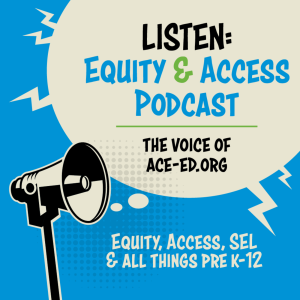
Another example of how the news cycle and current events don’t stop during the seemingly slower summer months is Territorium’s recent episode on Education Talk Radio.
Dr. Keith Look, VP of Education Solutions at Territorium, participated in a conversation with host Larry Jacobs to discuss a recent report that revealed Americans are beginning to shift their priorities for K-12 education – prioritizing the development of practical skills over college preparedness. He also shared details on the company’s work with the Young People’s Project to support academic and social development. Listen to the episode here.
To learn more about how Zer0 to 5ive can help drive visibility and industry leadership for your company drop us a line.
By Sydney Peterson
According to research by PRovoke Media, the PR industry grew by nearly 11% in 2021. Public relations can be powerful for your organization if you use PR to its full advantage. A strong and well-implemented PR strategy can help increase visibility and awareness and build trust and credibility with your key audiences.
Whether you want to improve your business’s PR efforts or hope to get started, one of your first steps in moving forward will be drafting a PR plan. To prepare a PR plan to set your organization up for success, it is essential to consider these four elements.
1. Know Your Brand
Deeply knowing your brand is the first important step in your PR plan. Your brand must be consistent through your website, social media, marketing, and any other external messaging. Your brand is everything about the business: who you are, what you do, how you look, and who you appeal to. If your brand’s image doesn’t match the mission you want your organization to represent, now is the time to change it. It is never too late to give your brand a refresh. If you are already content with your brand, then your PR plan can focus on other areas. In this case, ensure your newly drafted plan aligns with your current brand.
2. Know Your Target Audience
Now, who do you want to appeal to? Who is your existing audience? When evaluating your target audience, you should first ask these questions. If you aren’t seeing the results you hoped for with your business, reassess whose attention you’re grabbing. For example, you should consider which media outlets your target audience would follow and strategically target those outlets to reach your audience. After cross-referencing your current audience and your target audience, make a list of who you’re missing. Then, you are ready to draft a strategic PR plan to reach your target audience.
3. Know Your Goals
When outlining your objectives and strategy, remember to keep the big picture in mind. When defining your goals, it can be beneficial to include input from different people at the organization. Employees from different departments, positions, and backgrounds can offer unique perspectives that can help inform your strategy and make it stronger.
4. Know How You Will Measure and Track Results
As we all know, there is always room for improvement in both business and personal life. There is no time like the present to assess performance benchmarks and identify critical metrics for your organization. Measurement is vital for understanding where to focus going forward. It helps to be selective when choosing targets for improvement to ensure a high achievement rate in these areas.
Once the plan has been developed with input from across the organization, you will be set up for success to begin implementing your strategy and, using PR to improve your brand’s standing in the marketplace. This will allow you to utilize the power offered by a strong PR strategy.
By Maggie Markert
Public relations is all about awareness. That’s a no-brainer.
As public relations professionals, we are continuously working to generate awareness and visibility for our clients. But, any good professional knows that this job requires having complete awareness of not only clients’ public relations goals but having a complete understanding of their internal marketing and sales initiatives, industries, competitors, as well as happenings in the world overall.
This requires a lot of work behind the scenes – from connecting with clients regularly on topics much broader than public relations, to reading Twitter and LinkedIn, to catching up on news in dozens of newsletters or on TV each morning. While this work takes time, it is 100 percent worth it.
Take a look at some of the Zer0 to 5ive team’s recent placements in May that stem from this work.
U.S. News & World Report for YouScience

Being in sync with your client’s marketing team and activities can play a crucial role in public relations work. By understanding clients’ event and trade show schedules and, staying up to date on who recently downloaded their research and reports, public relations professionals can learn from and leverage a lot.
A great example of this is the Zer0 to 5ive team’s work with YouScience. The YouScience team had shared a notable download they had seen on a piece of research they conducted and placed on their website. It just so happened that this download came from a reporter with U.S. News & World Report, a key target for the company’s work. Armed with this information, the Zer0 to 5ive team was able to reach out directly to the reporter with a tailored and relevant pitch to secure an interview for YouScience’s CEO Edson Barton. Read the article here.
Forbes for Nauto
 There are thousands of journalists out there, and they each have a specific beat. Being able to take what you know about a client and translate it into a storyline that fits a specific journalist’s beat is critical.
There are thousands of journalists out there, and they each have a specific beat. Being able to take what you know about a client and translate it into a storyline that fits a specific journalist’s beat is critical.
A recent piece of coverage for Nauto demonstrates this. The Zer0 to 5ive team identified a media target at Forbes and was able to develop a particular pitch that was tailored to this target’s beat that specifically focused on CEOs. That pitch combined the deep knowledge and experience of Stefan Heck, CEO of Nauto, and the company’s unique value proposition to garner interest from the journalist. Read the article here.
Federal News Network’s Federal Drive Podcast for Qmulos
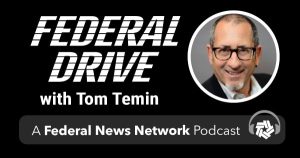
Understanding the media landscape doesn’t just include knowing which journalists are with certain outlets, but it also extends to the research some outlets may conduct. This research is important as it has the potential to be relevant to a client’s story and other media outlets.
Working with Qmulos, the Zer0 to 5ive team was able to leverage industry cybersecurity research from Insider to craft a tailored pitch to Federal News Network’s Federal Drive podcast. This pitch offered Igor Volovich, VP of Compliance Strategy for Qmulos, to discuss the risks of non-disclosure of a breach, and the need for continuous compliance and compliance automation. Listen to the podcast here.
ITPro Today for Onymos
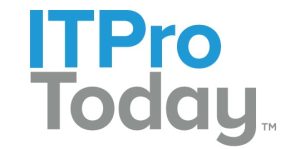
Another aspect of the media landscape also includes understanding what kind of content and story ideas each outlet accepts. It is key to know who accepts original research, contributed articles, product news, and more.
A recent piece of coverage for Onymos exemplifies this. In advance of the company’s release of new research in the application development space, Zer0 to 5ive identified top target outlets and contacts that would be a fit for the findings. This background research resulted in an interview for Onymos CEO Shiva Nathan and a feature on the research findings. Read the article here.
The Main Course Podcast for Chatmeter

Similarly to some of the examples mentioned above, there is no better way to get a client coverage than by knowing exactly what it will take to get into a certain outlet or build a relationship with a particular journalist. Showcasing this knowledge in pitches is paramount to gaining the trust of a journalist and ultimately interest in the client you are reaching out about.
The Zer0 to 5ive team employed this tactic to secure a podcast interview opportunity for Chatmeter. A strategic, tailored pitch was developed for the podcast around how online restaurants can maximize customer experience by leveraging data and learnings taken from online reviews. It resulted in an interview for Cynthia Sener, Chatmeter GTM President. Listen to the podcast here.
To learn more about how Zer0 to 5ive’s public relations team can help your company, visit our PR page or drop us a line.
By Maggie Markert
In our blog series, Media Moments, the Zer0 to 5ive public relations team highlights a variety of media coverage secured by the team on behalf of our clients every month. Check back each month to get a glimpse at the team’s ongoing work.
Public relations is a delicate art. While it may not initially seem that way from the outside looking in, it requires agility, creativity, deep knowledge of the landscape and journalists, and strategy. And, that’s exactly what we have at Zer0 to 5ive.
Day in and day out, our public relations team works diligently to build strong relationships with journalists and garner our clients placements that showcase their industry leadership, as well as their innovative products and solutions.
Here is a round-up of some of our team’s most strategic media hits during the month of April.
IGN for Sony AI

One of the primary jobs of a public relations team is to build the foundation that sets up a company and their subject matter experts as leaders in their industry. Over time, this can be done through proactive thought leadership pitching, contributed article placements, and company or product news.
The Zer0 to 5ive team has been working alongside the Sony AI team to generate awareness for the organization’s expertise in AI for gaming as well as its breakthrough autonomous AI agent, Gran Turismo Sophy (GT Sophy), to build that foundation through these steps. As a result, IGN secured inclusion of commentary from Sony AI’s Chief Operating Officer Michael Spranger in a roundtable article featuring other gaming visionaries. Read the article here.
Forbes for YouScience

There are tens of thousands of journalists in the U.S. alone, and each individual covers a different beat for the respective media outlets. It is paramount that public relations professionals understand the exact topics each member of the press focuses on as well as any intricacies of those topics. To gain an understanding of this, PR professionals must not only read articles from the individual, but also build a relationship with reporters that allows them to check in to see if their beat has changed over time due to external factors or current events.
A recent piece of coverage for YouScience with Forbes is a great example of this. For more than a year, the Zer0 to 5ive team has been nurturing a relationship with this specific journalist and his key focus area. With this understanding, the team was able to craft a story angle associated with the recent launch of YouScience® Brightpath – a first-of-its-kind technology that elevates educational relevance and engagement by helping educators and students plan individualized pathways – to secure coverage. Read the article here.
CIO Dive for Onymos
As we’ve previously shared in our last Media Moments post, most journalists find a story more shareable when it is connected to a trending topic. This hook could be a top awareness day or month, or a current event that has gained traction in the news cycle.
For Onymos, the Zer0 to 5ive team leveraged the highly popular and well-covered awareness day of International Women’s Day and Women’s History Month. The tie to these awareness holidays along with compelling commentary from Bhavani Vangala, Vice President of Engineering at Onymos, secured the company coverage with CIO Dive. Read the article here.
FierceBiotech for Greenphire
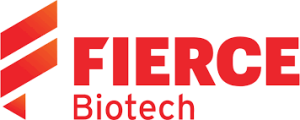
The ability to highlight innovation in any area of technology can be an exciting moment for all companies. From a media perspective, it can be a major generator of coverage as well as overall visibility and brand awareness.
Recently, Greenphire launched a new app called GreenSpace, which is a patient-facing digital platform that provides access to trial-related information and activities, including financial and travel itinerary details, surveys and insights. The Zer0 to 5ive team leveraged this innovation-related news to secure coverage from FierceBiotech. Read the article here.
Franchising.com for Chatmeter

Contributed articles (also known as bylines) hold a lot of power for companies looking to expand their thought leadership in a particular area. These articles, which are almost always vendor-neutral, enable companies to share the deep knowledge and expertise of their subject matter experts and business.
A recent piece of coverage for Chatmeter is a great example of this. The Zer0 to 5ive team pitched the background and expertise of Chatmeter’s President, Go-to-Market, Cynthia Sener, and garnered a placement with Franchising.com on her thoughts surrounding the impact of local brand intelligence on the success of franchises. Read the article here.
The Associated Press for CENTEGIX

Press releases are a tried and true method for disseminating information on a company, their products and services, research, and more. When distributed through a wire service, relevant, compelling press releases can have a wide reach and are helpful in driving awareness and visibility, generating SEO, and communicating important company news.
This AP article for our client CENTEGIX demonstrates the power of a press release. By sharing a press release on company sales momentum in the school safety market, Zer0 to 5ive secured an opportunity with AP for a timely story on the need for – and increased adoption of – school safety technology solutions. The interview and resulting article were picked up nationally by 550 publications, such as ABC News, Yahoo News, and U.S. News & World Report. Read the article here.
To learn more about how Zer0 to 5ive’s public relations team can help your company, visit our PR page or drop us a line.
By Maggie Markert
In a new blog series, Media Moments, the Zer0 to 5ive public relations team will highlight a variety of media coverage secured by the team on behalf of our amazing clients every month. Check back each month to get a glimpse at the team’s ongoing work.
Any public relations pro knows there is so much more to garnering great media coverage for a client than just pitching a story. It requires great skill, knowledge, tenacity and – most importantly – a strong story, point of view, or news hook.
Here is a round-up of some of our team’s most strategic media hits during the month of March.
The Grand Rapids Herald-Review for IMSE
 Reporters and editors love data and strong local stories. According to MuckRack’s State of Journalism 2023 report, journalists said that (54%) exclusive and/or surprising data or (47%) its ability to be easily localized was key to making stories more shareable.
Reporters and editors love data and strong local stories. According to MuckRack’s State of Journalism 2023 report, journalists said that (54%) exclusive and/or surprising data or (47%) its ability to be easily localized was key to making stories more shareable.
This piece of coverage for the Institute of Multi-Sensory Education (IMSE) demonstrates how a strong customer anecdote or case study, coupled with data, can result in a great story not only for a client but their customers. For this opportunity, the Zer0 to 5ive team leveraged the story of Grand Rapids Independent School District (ISD) 318, its educators, and their results to pitch and secure a story with Grand Rapids Herald-Review writer Jonathan Ryan. Read the article here.
Bloomberg Technology for Sony AI
 Securing national broadcast coverage can be a herculean task for companies and public relations pros. In order to be successful, you have to make the story timely and compelling as well as have strong video content that can be leveraged by producers as b-roll to help illustrate the story. As reported in the MuckRack State of Journalism 2023 report, nearly 70% of journalists said connecting the subject to a trending story is key to making it more shareable while another 24% said it must contain video.
Securing national broadcast coverage can be a herculean task for companies and public relations pros. In order to be successful, you have to make the story timely and compelling as well as have strong video content that can be leveraged by producers as b-roll to help illustrate the story. As reported in the MuckRack State of Journalism 2023 report, nearly 70% of journalists said connecting the subject to a trending story is key to making it more shareable while another 24% said it must contain video.
This broadcast appearance for Sony AI is a shining example of this. The Zer0 to 5ive team combined the news of Sony AI’s commercialization of its breakthrough autonomous AI agent, Gran Turismo Sophy (GT Sophy), the media’s current focus on artificial intelligence, and a variety of video assets to pitch and secure a segment with Bloomberg Technology. Watch the full segment here.
District Administration for Centegix and SchoolStatus
 In today’s journalism landscape, media outlets are always open to receiving contributed content. These pieces, in most cases, are meant to be informative and thought leadership oriented, with the subject matter expert (SME) offering a unique perspective on a topic or non-promotional recommendations. Publication of this content can occur by first offering a detailed – yet concise – outline of what a piece could look like or by sharing a complete article draft.
In today’s journalism landscape, media outlets are always open to receiving contributed content. These pieces, in most cases, are meant to be informative and thought leadership oriented, with the subject matter expert (SME) offering a unique perspective on a topic or non-promotional recommendations. Publication of this content can occur by first offering a detailed – yet concise – outline of what a piece could look like or by sharing a complete article draft.
For both Centegix and SchoolStatus, the Zero to 5ive team was able to take advantage of the deep expertise of each client’s SME to secure the publication of two articles with District Administration through a complete draft and a strong and detailed pitch outline. Read the Centegix piece here, and the SchoolStatus piece here.
GettingSmart for Territorium
 The ability to build relationships with the media is the most critical part of a PR pro’s job as it helps you build a rapport and credibility for them and the client. These relationships are built as a result of an acute understanding of exactly what each reporter, editor or producer looks for in stories as well as hard work over time.
The ability to build relationships with the media is the most critical part of a PR pro’s job as it helps you build a rapport and credibility for them and the client. These relationships are built as a result of an acute understanding of exactly what each reporter, editor or producer looks for in stories as well as hard work over time.
Over the last few months, the Zer0 to 5ive team has been cultivating a relationship with GettingSmart writers and editors on behalf of Territorium. It first started with a demo and then continued with a number of conversions. This resulted in an in-depth feature on the company’s LifeJourney platform. Read the feature here.
FierceBiotech for PreciseDx
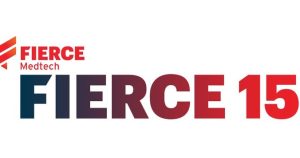 Relationship building is a beautiful thing in public relations. As I mentioned earlier, it is a result of hard work over time (sometimes months or even years!) and knowing what resonates.
Relationship building is a beautiful thing in public relations. As I mentioned earlier, it is a result of hard work over time (sometimes months or even years!) and knowing what resonates.
For the Zero to 5ive team, this is especially true with PreciseDx. The team has cultivated tremendous credibility and name recognition for the company over the course of the last year after having secured a number of interviews and coverage across Questex publications such as FiercePharma, FierceHealthcare, and FierceBiotech. As a result of this recognition among the “Fierce” community, PreciseDx was chosen as one of FierceMedtech’s 2022 Fierce 15 list – which profiles the most exciting startups in medtech. See the list here.
To learn more about how Zer0 to 5ive’s public relations team can help your company, visit our PR page or drop us a line.
By Chelsea Lindner
Many experts believe public relations is a dying profession because of the way it has transformed in recent years. While the industry is changing to keep up with accelerated technology and shrinking newsrooms, it is at no risk of extinction.
The Emergence of Social Media
Social media has become one of the fastest-growing strategies for brands to create awareness, tell stories, and give themselves a “personality.”
Look at the social media accounts. Twitter especially – of some of the biggest brands, you will see an abundance of creative graphics, snubs at their competitors, and overall more engaging content.
A more recent trend, for example, is some of the world’s biggest fast-food chains battling back and forth on the platform about who has the best burgers. This content tends to be lighthearted and entertaining for consumers.
This speaks to the way companies are trying to position themselves amongst their competitors and give their brands more character. However, these companies still need to tread lightly and be aware of their audiences, as one minor mistake could lead to a controversy that the brand then has to respond to. These catastrophes can be avoided with the help of an internal or external team of PR professionals.
With social media, brands have more channels to express themselves but also an increased risk of getting into hot water, which means it’s critical to have experts that can help prevent these situations and be able to repair them if they do occur.
Enhanced Skillset and Lower Costs
Along with the expansion of PR strategies afforded to companies, there is an added factor in the skillset a PR specialist must possess. We have begun to see that experts must be well-rounded, and essentially, those who work in the industry are becoming writers, reporters, editors, and much more. They must be skilled and quick with language communication through all types of mediums.
In addition, more companies want to see the ROI of their PR efforts, meaning professionals now have to work harder and be able to prove their strategies are effective.
While this seems like a lot, it’s actually a win-win for both businesses and the professionals themselves. Companies are saving money by having an all-in-one team comprised of individuals that are creative, can produce good content, and can measure success. Professionals are gaining a wide range of skills that can be useful in taking their careers to the next level or even when considering pursuing a career in a different industry.
PR and Marketing Will Remain Separate (While Working Together)
Many seasoned PR and marketing professionals believe that in the revolution we’re undergoing, marketing/advertising and PR will begin to merge into one industry.
While these lines may begin to blur, it’s safe to say that for the foreseeable future they will remain separate. These industries are vastly different and therefore require two different skill sets. The most common difference is that media relations are “earned media,” and marketing is “paid media.”
Although the two are very targeted approaches, what works in a digital marketing campaign may either 1) not be able to be implemented into a PR strategy and 2), if it can be, may not be as successful.
Additionally, the tactics aspects of storytelling are very different when you look at marketing and advertising, and media relations. When speaking with professionals from these different industries, you may find some similarities. Still, the mindset as a whole will likely be different, providing proof that while both of these are critical, they will remain separate.
A Google search will show hundreds of results from experts on how and why they believe the PR is at risk and “a dying breed.” While these experts may have valid opinions, none of us know what the future holds. It’s essential to look at this revolution in how it’s positively impacting the industry and brands and the exciting things to come instead of undermining the importance and effectiveness of this profession.
By Sydney Stressman
Sending mass pitches gets some flack from reporters – and rightfully so. If not done correctly, sending mass pitches can come across as though the PR person behind the pitch didn’t do their research. As a PR professional, I find that when done the right way, mass pitching can be highly valuable. We should always send our pitches to a strategic list of reporters and publications who would find the information helpful and potentially write about the news or topic. For instance, if your edtech client is releasing new research, make sure you’re sending the pitch to education reporters, specifically those who cover research and data.
Personalized pitching has grown to become the preferred method by journalists. Still, everyone in PR knows there is a time and place for this pitching, especially since it can be very time-consuming. But, the effort tends to result in significant, in-depth coverage for the client and new or deeper relationships between reporters and PR pros.
Personalized Pitching: The Preferred Method by Reporters
Personalized pitching is when a pitch is created with a specific reporter in mind. It can be highly valuable as the reporter often prefers this method, considering the PR pro took time to research what the reporter often writes about. This tactic typically results in more responses because the reporters can tell the PR rep put time and effort into the pitch.
This type of pitching is typically used for embargoed or exclusive opportunities. An embargo is when one or more (but usually less than 10) reporters are given a heads up on an upcoming announcement and early access to deliverables, such as a press release, infographic, research report, etc. before it’s available to the public. Reporters are often fond of this type of outreach, considering they can ‘break the news’ before anyone else.
It is essential to spend some time learning about the reporter. Find out if they have any similar hobbies that can help jumpstart the conversation. For example: “Hi Stephanie, I saw your recent tweet that you are a Taylor Swift fan! Have you had any luck getting tickets to her upcoming tour? Fingers crossed! Anyway, I wanted to see if you’re interested in learning more about my client’s recent research on…” While this may seem like a casual start to the conversation, it humanizes you to reporters and lets them know that you know about them and have things in common.
Personalized pitching can also be an excellent tactic for relationship-building with key reporters. Another example: “Hi Mike, I wanted to check in with you as you have expressed interest in my client’s previous product announcement. Would you be interested in a 15-minute call with our Head of Product to show you the new features that will launch this summer? It would be an exclusive opportunity just for you.” This shows that you pay attention and keep tabs on prior conversations but value them and want to provide exclusive information to them.
Ultimately, personalized pitching results in quality coverage in your top publications and great connections with reporters. A win-win for you and your client!
Strategy is Key When It Comes To Mass Pitching
Mass pitching is often scrutinized as this method can be poorly executed and cause frustration from reporters. When it comes to mass pitching – there are two types: careless mass pitching and strategic mass pitching. Careless mass pitching is when a pitch is sent to a broad list of reporters without researching what the reporters write about or if they’re still at the publication. Usually, this frustrates reporters because it is clear that the PR rep didn’t give much thought to the pitch and its recipients. Once in a while, this type of pitching can result in coverage, but I wouldn’t count on it.
On the other hand, strategic mass pitching can be extremely useful as it allows PR pros to effectively send important, timely information to reporters. When done correctly, the PR rep will have selected a list of reporters who they are confident will find this information helpful and potentially want to interview the client. Reporters will still receive information relevant to their beat and likely appreciate being included on the email list.
Most importantly, strategic mass pitches need to be concise. While correspondence to a reporter should be to the point, this is especially true for strategic mass pitching. As PR pros, we are often told that reporters prefer the info they need upfront. Think about: Why is this important? Why should the reporter care? These emails usually aren’t the time or place to try and make a personal connection with the reporter. It is likely that you already have a relationship with the reporter, and they are expecting upcoming news on your client from you.
Ultimately, it is important to consider the pros and cons of personalized and mass pitching. Both have a time and place and, when used appropriately, can have great success.
By Lindsay Hull, Director of Media
You secured a media interview for your client. Yay! Now what? When you are asked to facilitate an interview, it is important to remember that the goal is to position your client’s organization in the best possible light – whether it’s for a product launch or a profile piece on an executive. If you (or your client) are not prepared, interviews can be nerve-wracking and sometimes frustrating. To facilitate a successful media interview, there are a few key things to keep in mind. Here are five tips for making the most of your next media interview.

1. Prepare Your Client
Preparing for a media interview is all about managing expectations and setting the stage for success. To do this, PR people need to consider the message they want to communicate and the audience they are trying to reach.
Once that framework is in place, the PR pro should develop a briefing document for the client that includes potential questions and key talking points, along with other important information like details about the reporter, past articles by the reporter, the logistics for the call, and so on. These details will help the client understand the goal of the interview, stay on message, and position the interview for the publication’s audience. Coordinating a prep call with your client to rehearse their responses is also a helpful tactic, particularly for high-profile interviews. For some interviews, it’s also important to practice how the client will react if confronted with tough questions or unexpected follow-up questions. By simulating different situations ahead of time, both you and your client will feel more confident when it comes time for the real interview.
2. Make Introductions
Once you’re on the line with the reporter and your client, it’s time for introductions. As the PR pro, it is your job to set the stage for a productive discussion and help everyone feel at ease. Be prepared with the client’s name and title and have a short synopsis of what they’ll be talking about during the interview (it’s a good reminder for both the client and reporter). If there are any topics that are off-limits, or if the discussion is under embargo, now is the time to remind the reporter.
Following introductions, it’s also important to communicate what your role will be during the interview: to support your client during the interview with additional information as needed, and to handle any follow up items that need sending – images, additional information, etc. This gives everyone on the line full transparency.
3. Monitor the Interview
Once introductions are complete and you hand the conversation over to the reporter to begin their questions, you have several jobs to keep in mind as you monitor the interview. The most important thing is to listen carefully and take good notes. Being an active listener in the interview ensures that you can intervene (if need be) so that the message you want to communicate is accurately represented in the story. Listening carefully is also critical for Step 5 when you provide performance feedback to your client. Plus, you may be able to pick up on some new details or tidbits from your client that can be used to craft your next great pitch! Lastly, if your client forgets to mention an important talking point, now is the time to bring it up. If you’re off exploring what your next pie recipe will be and not paying attention to the interview, you may miss your chance.
4. Close the Interview
As the interview comes to a close, always thank all parties for taking the time to conduct and participate in the interview. Second, you should invite the reporter to contact you if they have any further questions or need clarification on anything. Finally, while you have them on the line, you can ask the reporter if they had a sense on when the article will be published. This is key information so that you can send your hard earned media coverage to your client in a timely manner.
5. Provide Your Client with Helpful Feedback
It’s important to provide feedback to your client after a media interview, whether it was positive or negative. You can help them understand how they did and what they can improve upon for next time. This feedback is crucial for helping your client learn and grow as a media personality.
Following these five steps will help you prepare for and facilitate a successful media interview. Planning ahead and being prepared are essential to ensuring a smooth and stress-free interview. Let us know of any additional tips or information you may have!
By Maggie Markert
Most startups and early-stage companies cannot rely on press releases alone to drive their media relations strategy and corporate visibility. As new companies, often pre-product, startups are rarely able to generate enough news to warrant a continuous flow of press releases, which means any momentum generated from hard news is left to wallow. However, all is not lost. What startups, especially those in tech or biotech, often have to offer is innovation and thought leadership – tackling a problem from a different angle or creating a new approach or technology to address a critical market pain.
Thought leadership as part of a startup’s communication strategy is smart. Thought leadership gives a voice to your innovation and can be a great way to elevate your visibility and industry presence.

What Is Thought Leadership in PR?
Thought leadership is a public relations strategy that enables you to position your company and its subject matter experts as industry thought leaders. When used as part of a broader communications strategy, thought leadership enables media coverage without hard news (e.g., a press release), as well as other avenues of visibility, such as speaking engagements and awards.
Thought leadership typically involves:
- Offering expertise on key topics or trends from one of more executives
- Developing bylined articles on industry trends for trade publications
- Securing speaking opportunities at key industry shows and conferences
- Publishing original research or data through surveys, white papers, internal metrics or other reports
- Providing industry commentary through one or more active social media channels – blogs, LinkedIn, Medium, or being a regular contributor to a respected publication, such as Forbes
How Do You Develop a Sound Thought Leadership Strategy?
At its core, thought leadership is about expressing your point of view on a new approach, strategy, technology, application, etc. It is something new and novel, differentiated from others. For technology companies, thought leadership often comes in the form of articulating a core difference in your product or solution.
One example is from a client of ours in biotech. They have developed a new approach to attacking solid tumors that is a true CAR-T 2.0 therapy, utilizing a multi-chain construct. No one else is doing this. Their thought leadership strategy includes talking about the challenges seen in CAR-T 1.0 therapies and how their new approach is more effective.
Often, the goal of thought leadership is to “own” a topic so that you become the foremost voice on the subject. This takes a commitment to being proactive. Tactics you should consider include conducting research, creating an industry perspective paper, giving presentations, writing articles, and identifying internal or external metrics that support your point of view.
From Thought Leader to Industry Leader
Thought leadership often leads to industry leadership. While thought leadership often relies on vision, industry leadership follows with hard numbers and customer engagement. By using thought leadership as a strategic part of your communication program, companies can expand their visibility and spur early customer interest that helps build industry leadership and success.
By Patrick Reilly
We’ve all been there. The client has no upcoming announcements and the proactive pitches just aren’t hitting the mark. That doesn’t necessarily mean the pitch angles aren’t ideal or that the topics aren’t of interest, but as public relations professionals, we are in a results-oriented industry where it’s our job to deliver media opportunities and coverage.
In this scenario, the best option would be some good, old-fashioned rapid response pitching. For those unfamiliar with the term, rapid response pitching entails some due diligence in searching the internet to find relevant media coverage that aligns with your client’s industry or a particular pitch angle and, well, responding to them rapidly. This practice is a great way to build media lists and create new relationships while securing interviews and coverage. Here are a few tips to get the best results from your rapid response pitch:
 Track Your Client’s Keywords
Track Your Client’s Keywords
This can be achieved by using services like Google Alerts or Talkwater, where you set up alerts for keywords that are relevant to your clients. For example, if your client is focused on “Cloud Cost Management,” you should include everything that is related to this topic, which may include a broader term like “Cloud Computing” to something more niche like “Cloud Cost Optimization” or “Collaborative Cost Management.” Major players in this industry should also be included, such as “AWS” or “Azure” in this example, to see who is writing about these organizations.
You should also include your client’s top competitors in your search. These might actually end up being the “low-hanging fruit” in terms of getting interest from reporters. Rapid response presents an opportunity to reach out to editors and explain what your client is doing and how they are better, different, or deserve inclusion in future story ideas. In addition, you should also customize all of your alerts to get notified as soon as they happen – this way, you’re one of the first to get the hot news stories.
Check Media Alerts Often
PR professionals should start the workday by checking their media alerts and repeat the process throughout the day. While scanning keywords for proactive pitching, you can identify whether the article is a good fit, as you will quickly find that a good portion of articles that come through are not relevant or come from small outlets outside of your client’s target geographies.
If you find a great article from a desirable outlet, you then move on to the next step (see below for how to go get ‘em). Another avenue to consider is a simple Google Search on related topics and see what the media is writing about in the last month that might be worth some outreach.
Go Get ‘Em!
Ok, you identified a perfect article – so, now it’s actually time to respond. The subject line I like to use is a simple “In response to your recent article in the Wall Street Journal” or something more broad and ambiguous that is more likely to grab a reporters attention. They are getting hundreds of pitches a day, so a subject line that is not too specific might encourage them to open the email – especially when you are talking about something they already wrote. The best way to start an email is to politely touch the reporter or editor with a simple lede that starts off something like the example below:
Hi xx,
My name is Patrick Reilly and I help conduct the PR efforts for “Clients Name.” I notice that you recently wrote the article entitled “XYZ,” and I’d love to connect you with “Spokespersons name”, “Title” of “Clients Name” – “Clients Key Message” to talk about “pitch angle.”
After your intro, customize the rest of the pitch to fit the angle and make it more personal. Sometimes the article might follow exactly along the lines of the angle you are pitching, and the reporters might not be that interested in speaking to your client since they just wrote about that topic. In this situation, it is still a good idea to reach out, as the reporter might have a follow up story or want to keep your client on radar for any related stories they’re working on. With pitching, the worst answer you can get is “no” – but you can move on and find another article of relevance to rapid respond to.
Responding to Rapid Response
I think this might be the most overlooked part of rapidly responding to the media – forgetting to follow up with the initial email. It is a good idea to respond directly to the email you originally sent, which gives you a ‘second chance’ to send another broad and ambiguous subject line that references what the reporter already wrote. For example, the response email can look like the example below:
Hi xx,
Just bumping this email to the top of your inbox!
Let me know if you can set up a future call with “Spokesperson name” “title”, of “Companies Name” to discuss “relevant pitch angle” for a story idea. Let me know what time/date works best to schedule a call.
Let me know if you also might be working on future related stories where you can use “spokesperson’s name” as a source.
Thanks!
XX
I wouldn’t follow up more than once on a rapid response via email – but you can also call the reporter on the phone to follow up with a similar message. Since the first note is a rapid response, the follow up is more of a courtesy reminder, after that – you are just annoying the reporters.
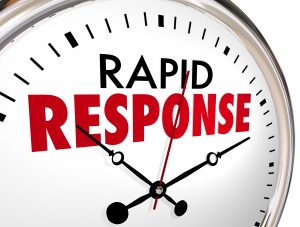
Timing – How Soon Is Now?
The ultimate idea of rapid response pitching is exactly that – responding right when a news article is fresh. However, since we are not robots and because systems like Google Alerts are not always reliable, it’s not always possible to get to every relevant story immediately. Ideally, rapid responding to articles should be within a few hours to days after they run – but it’s ok to reach out as far as three months after the story has ran. This also depends on the angle you’re pitching and the story itself of course. If the original article is a feature on “sustainability in cloud management,” you have more time to respond. However, if it’s a major announcement from a company, I think two weeks might be the most time you have before it’s considered ‘old news.’
Rapid response pitching is a fantastic way to create new and strong media relationships, build media lists for reporters that might not be listed on Cision or other media monitoring platforms, and above all, get a new interview in a desirable outlet that will hopefully turn into coverage.


